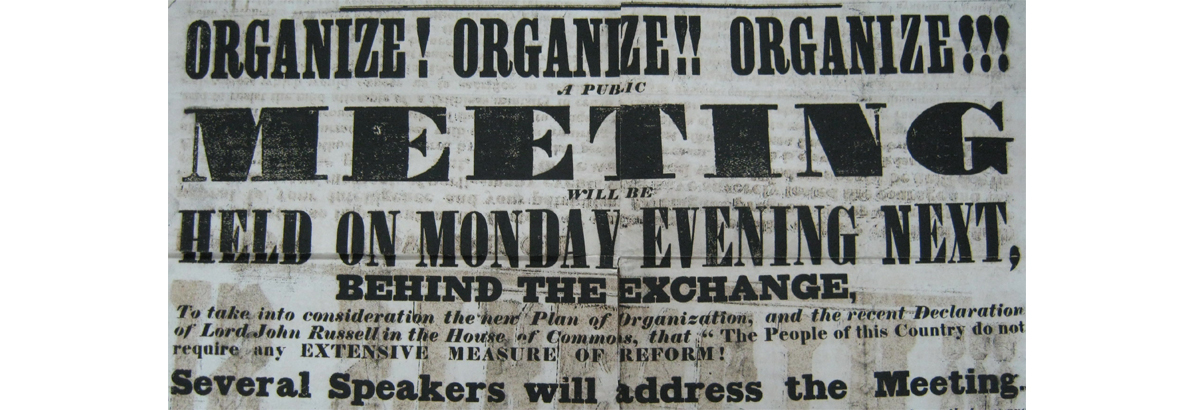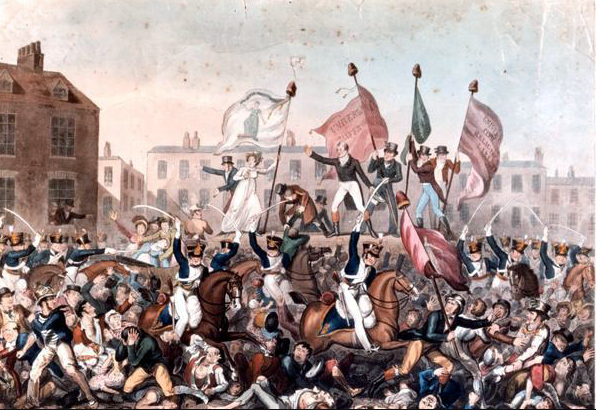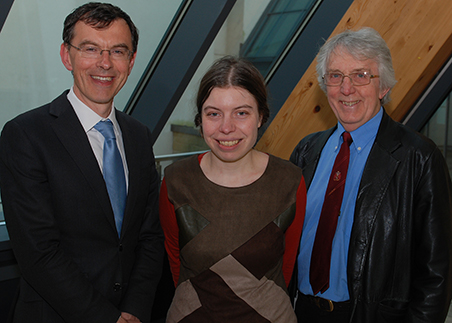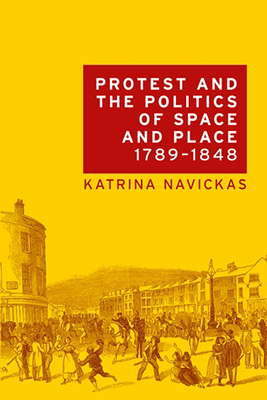Luddite Memorial Lecture by Dr Katrina Navickas

Tue, 11 Apr 2017 09:48:00 BST
With a government clampdown on public assemblies in the early 1800s, protests movements in towns like Huddersfield would organise large gatherings outside borough boundaries
 ► An illustration of the infamous Peterloo Massacre in Manchester
► An illustration of the infamous Peterloo Massacre in Manchester
AGITATORS for democratic reform and workers’ rights in the early 1800s were confronted by legislation from a government fearful that ideas from the French Revolution might take root across the Channel. The new laws resulted in a clampdown on free speech and meant that it was difficult for protest movements to find places and spaces in which they could gather without risk of arrest and a charge of sedition. How they got round the problem was the subject of the 2017 Luddite Memorial Lecture at the University of Huddersfield.
It was delivered by Dr Katrina Navickas, a historian who makes use of digital mapping for her research into 19th century protest movements and where they met. She was the fourth lecturer in an annual series that is organised by the University in tandem with Huddersfield Local History Society.
Dr Navickas, whose lecture focused on the West Riding, stated that the new movements for democracy from the 1790s fought for the right to meet as well as the right to speak. Among the laws designed to curtail these rights was a ban on unlicensed meetings of 50 or more people. The legislation was designed to prevent “seditious assemblies”.
Local elites, such as magistrates and manufacturers, were the most zealous enforcers of the rules and often proved to be more reactionary than the Government, according to Dr Navickas. She described and displayed maps of some of the West Riding locations that became centres of protest, from town centre market squares to fields and moorlands that were often outside borough boundaries.
 ◄ Pictured with speaker Dr Katrina Navickas are the University's Deputy Vice-Chancellor, Professor Tim Thornton, and the Chair of the Huddersfield Local History Society, Cyril Pearce
◄ Pictured with speaker Dr Katrina Navickas are the University's Deputy Vice-Chancellor, Professor Tim Thornton, and the Chair of the Huddersfield Local History Society, Cyril Pearce
These became the sites for large gatherings that were important and colourful all-day excursions for families, who would often walk large distances to hear radical speakers at places such as Crosland Moor near Huddersfield and Peep Green in Hartshead.
Opportunities to hold town centre gatherings depended on factors such as land ownership, Huddersfield was problematic because it was dominated by the Ramsden family, who owned all the key sites, but protest movements found room for manoeuvre and adopted what Dr Navickas described as “spaces of making do”.
 They used pubs and warehouses and one tactic was to avoid the need for a licence by meeting in Dissenting chapels, under the pretence of holding a religious meeting. Some sects – especially the Primitive Methodists of the West Riding – were sympathetic to the social aims of radicals. In time, said Dr Navickas, social protest movements had the funds to build their own clubs and premises that included working men’s clubs and Chartist Halls.
They used pubs and warehouses and one tactic was to avoid the need for a licence by meeting in Dissenting chapels, under the pretence of holding a religious meeting. Some sects – especially the Primitive Methodists of the West Riding – were sympathetic to the social aims of radicals. In time, said Dr Navickas, social protest movements had the funds to build their own clubs and premises that included working men’s clubs and Chartist Halls.
In British history, space and place have often played a background role, with historians focusing on speech, said Dr Navickas.
“But now historians agree on the importance of space, in particular the politics of the street,” she said. Her website includes the digital maps she is developing, including the locations of political meetings in Northern England between 1775 and 1848.
The 2017 Luddite Memorial Lecture was introduced by the historian Professor Tim Thornton, the University of Huddersfield’s Deputy Vice-Chancellor.
“In 2012, when we and the Huddersfield Local History held a symposium to mark the bicentenary of the Luddite Rising, Dr Navickas gave the keynote address,” said Professor Thornton. “She therefore helped to lay the foundations for an enduring legacy in this lecture series. So it is highly appropriate that she should have come to speak to us again.”
- Dr Navickas is Reader in History at the University of Hertfordshire. Her latest book is Protest and the Politics of Space and Place.







